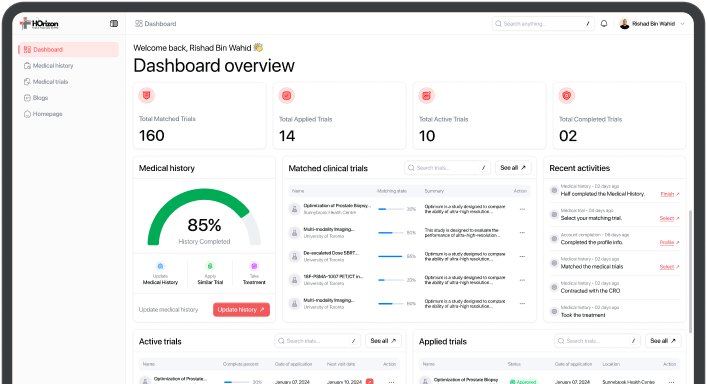Gadoxetate Abbreviated MRI in Metastatic Colorectal Cancer
Contact information
Harry Marshall, MD/PhD
St. Joseph's Healthcare
London, Ontario, Canada, N6A 4V2
Basic information
N/A
N/A Age
300 Enrollment
Trial Details
Brief Summary
After a patient is diagnosed with colon cancer, they receive a CT of the chest, abdomen, and pelvis to see if the cancer has spread (metastasized) to other parts of the body. A common site for the cancer to spread to is the liver. If an abnormality is seen in the liver on CT, sometimes an MRI of the liver is required to determine a) whether it is cancer or not and b) whether there are small tumours in the liver that were not visible on CT. During the MRI, the patient is injected with intravenous (IV) contrast. This makes liver lesions more conspicuous and also helps determine if they are cancerous or not. The most commonly used IV contrast agent is called Gadovist. However, there is another IV contrast agent called Primovist that is better at detecting liver metastases from colon cancer than Gadovist. This is very important information for surgeons, because if they considering cutting out (resecting) the liver tumours, they want to make sure they get them all. Unfortunately, Primovist is used sparingly in Canadian hospitals because it is more expensive than Gadovist and the MRI takes longer. Some early small studies have suggested that it may be possible to shorten the Primovist MRI significantly (e.g. from 60 minutes to 15 minutes), making it economically feasible to offer Primovist to more patients. However, there have not been any large studies performed to confirm these findings. The purpose of this study is to compare the accuracy of colon cancer liver metastasis detection between a regular, full-length Primovist MRI versus a shortened Primovist MRI protocol. The economic impact will also be assessed.
Official Title
A Prospective Study Evaluating Diagnostic Accuracy, Outcome, and Economic Impact of Abbreviated Gadoxetate-enhanced MRI of the Liver in Patients With Metastatic Colorectal Carcinoma
Selection Criteria
Eligibility Inclusion Criteria
-
- Male or female, 18 years of age or older
- Diagnosis of colorectal cancer, biopsy proven
- Prior imaging showing liver lesions that may be metastases
- Provision of signed and dated informed consent form
- Willingness to comply with study procedures and availability for the duration of the study
- Able to tolerate MRI required by protocol
Eligibility Exclusion Criteria
-
- Presence of implanted medical device or metallic object that is MR incompatible
- Baseline eGFR of < 30 mL/min/1.73 m2
- Severe claustrophobia not relieved by oral anxiolytics
- Documented severe allergic-like reaction gadolinium-based contrast agent
- Weight greater than allowable on MRI table
- Pregnancy
- Diffuse liver metastases, i.e. definitively unresectable
- Severe liver dysfunction, ALBI grade 3
